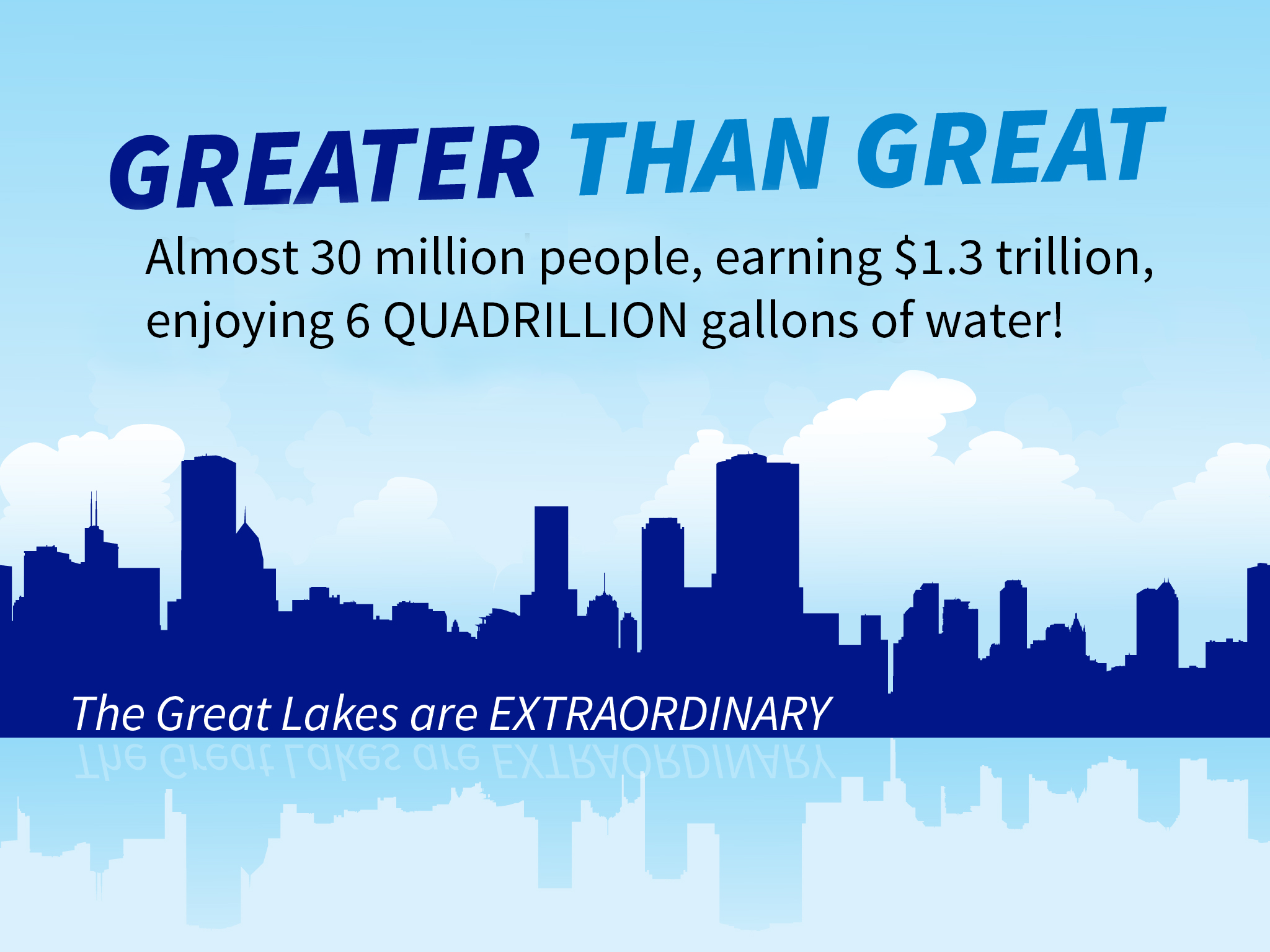Fast Facts / Great Lakes
Great Lakes
Illinois, Indiana, Michigan, Minnesota, New York, Ohio, Pennsylvania, Wisconsin
The Great Lakes span 4,530 miles1 of coast and account for 21 percent of the world’s freshwater. More than 30 million people rely on the Great Lakes for drinking water—10 percent of the U.S. population and 30 percent of the Canadian population.2
$8.8 Billion in Wages
The U.S. Great Lakes maritime economy supports 311,000 jobs spanning every sector, from tourism and recreation to marine transportation. This translates to $8.8 billion in wages.3
11,500 Acres of Protected Lands
Through the Coastal and Estuarine Land Conservation Program, state and federal programs have protected approximately 11,500 acres of land within the Great Lakes.4
$3.35 Return for Every Dollar
Coastal areas represent strong economic and ecological engines in the Great Lakes. For every dollar spent in Great Lakes Restoration Initiative funding, an estimated $3.35 in economic activity is produced.7
An Economic Powerhouse
The total economy for the U.S. Great Lakes region generated $3.1 trillion in gross domestic product while employing 25.8 million people and supporting $1.3 trillion in wages. This is due in large part to the five major ports in the region: Chicago, Cleveland, Detroit, Duluth, and Milwaukee.3
Agencies Work Together to Accomplish More
Created by Congress in 2004, the Great Lakes Restoration Initiative encompasses 16 federal agencies to provide funding and target the biggest threats to the region. Managed by the Great Lakes Interagency Task Force, the effort is EPA-led.5 Learn more about the work the office is doing through this initiative.
Lake Levels Rise and Fall
The amount of water in the Great Lakes goes up and down based on season, rainfall, and a variety of other factors. Low levels create dredging and infrastructure issues, while high levels cause flooding and erosion problems.
States Focus on Coasts
All eight Great Lakes states have active Coastal Zone Management Act programs working on state-specific coastal issues. In addition, two national estuarine research reserves protect a combined 17,270 acres. The reserves are located on Lake Superior and Lake Erie.6
